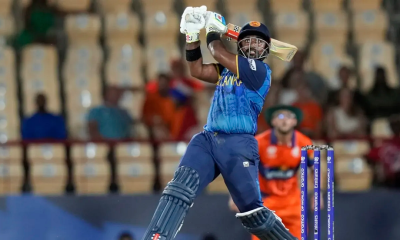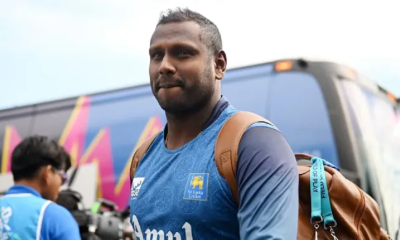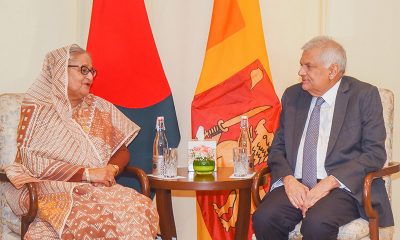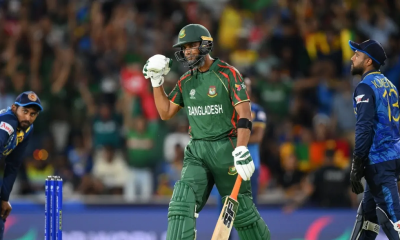Opinion
Giving the Fuller Picture on Nuclear Energy
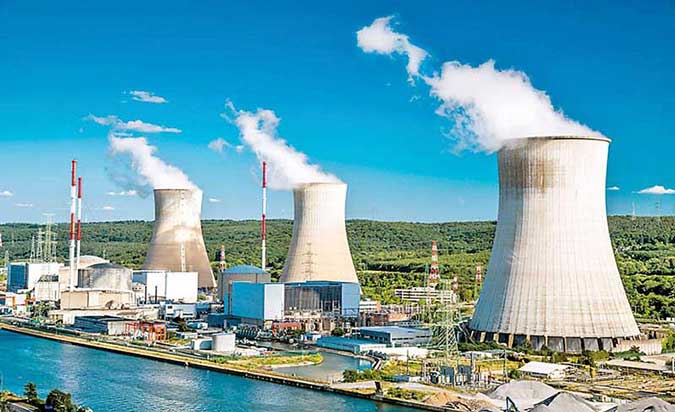
(Correcting some Misconceptions)
In the Sunday Island of Apr. 21 a letter from Dr. U. Pethiyagoda said it is worth emphasizing that uranium was first developed as a nuclear fuel to use in reactors not because of its safety features or that it was ecologically harmless, but that it could be used to make large bombs befitting the world’s great superpower.
And now we find that uranium also can be used to make “depleted uranium” a very hard, heavy metal useful in munitions for war. They deliberately side-lined thorium, a less dangerous, more ecologically friendly metal, and chose to develop and use uranium due to those benefits of war. The use of thorium to generate power is an astonishing omission on Dr. Pethiyagoda’s part. Thorium has very valuable qualities.
Crucially, energy from thorium is a safer, cleaner, simpler process if you use the liquid fluoride thorium (LIFTR) process. And because this process is scaleable, the reactors can be made large or smaller and these are cheaper to build than uranium power generation. This lower cost brings them within the reach of smaller countries. In fact many of the points Dr. P raises of the harmfulness of uranium, do not apply to thorium reactors, because the heat generation process is different and safety features are built in to the reactor vessel as part of the fuel cycle.
Please note that several countries are researching the uses of thorium for power generation, notably Russia, India and China. These countries have designed, built and are operating thorium research reactors. These are mostly in the experimental stage as the possible permutations and combinations of inputs are many and various. These may not be optimized to easy solutions. However, these countries are employing thousands of scientists doing research to find best solutions.
The aim is to generate heat from thorium safely and economically. The pundits expressing their views in the Sunday Times condemn nuclear power but have omitted this important information. It can be confidently asserted that the advantages arising from the use of thorium are so great that the difficulties will be overcome, eventually.
This will benefit mankind immensely – machines based on thorium energy will give continuous power for many years with only minimal environmental damage. While the great list of problems listed apply to uranium power generation, they may not apply to energy from thorium.
However, there are two problems with thorium – these are: 1) The lack of qualified, trained staff to operate these machines and 2) The lack of regulatory approval. The point (2) given above may contribute more to the cost than the whole installation itself which gives the familiar and well established uranium plant an advantage. Potential owners of such plants may prefer uranium power over thorium as a means of reducing uncertainties – that is uranium’s chief asset.
By reminding us of the horrible mistakes and accidents of the past, this throws up a wall of horror and revulsion at all things nuclear, which makes the greens and coal lobbies happy! In fact, the thorium reactor using the Liquid Fluoride Thermal Reactor (LIFTR) process is a remarkably safe method of generating heat and energy. This is because there are safety measure actually built in to the machine which ensure a run-away can never occur. Thorium is the opposite to uranium: in the case of thorium, the process has to be coaxed along to keep it going.
Because of their relatively small size and cost, efforts of containment are manageable. There are huge pluses, or selling points for thorium that the writers of these letters fail to discuss. Power installations can be quite small, even house-sized buildings, say locating one either side of a town or city. Importing thorium pellets is not necessary as Sri Lanka has its own deposits of Thorium. Also note that by placing units where the power is needed obviates the necessity for transmission lines connecting a countrywide grid. This is a huge savings in capital costs and power transmission line efficiency losses.
The costs of building smaller power installations is well-within the Sri Lankan budget and also would create many interesting, scientific jobs. Therefore, I write to point out that these letters do not give the entire picture of generating energy from nuclear sources. But they do help to build resistance to the truth, new facts and new technologies.
It can be noted that if Russia is contracted to build such installations, they would guarantee their work and give conditions and caveats. (They have vast amounts of experience from many such installations around the world). On that basis it would be most unwise to refuse their high quality offer.
Priyantha Hettige
Opinion
Friendship with all, but India is No.1
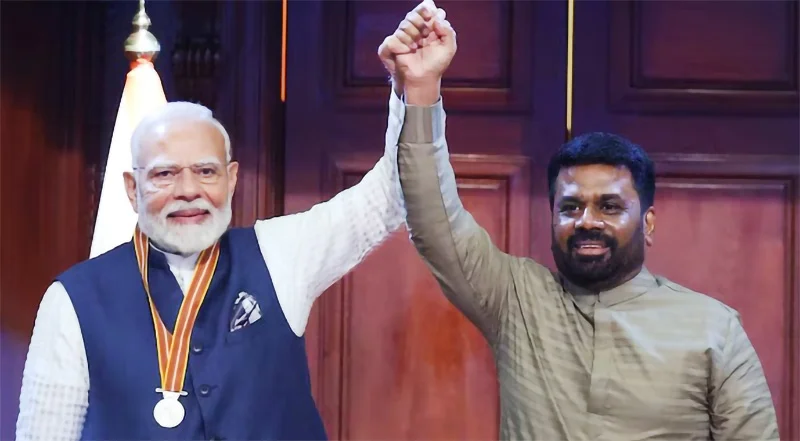
The government did everything in its power to welcome Indian Prime Minister Narendra Modi during the three days in April 4-6 he was in Sri Lanka. The country is known for its hospitality and the government exceeded expectations in its hospitality. There were children to greet the prime minister at the airport along with six cabinet ministers. There was a large banner that described the Indian prime minister in glowing terms. President Anura Kumara Dissanayake also conferred the Sri Lanka Mitra Vibhushana Award, the country’s highest award, to Prime Minister Modi in appreciation of friendship and cooperation. The role that the Indian government under him played in saving Sri Lanka from economic disaster three years ago would merit him nothing less. The gesture was not merely humanitarian; it was also an astute expression of regional leadership rooted in a philosophy of “neighbourhood first,” a cornerstone of Prime Minister Modi’s foreign policy.
India has a key role to play as a stabilising actor in South Asia, especially when regional neighbours falter under economic or political pressure. It has yet to reach its full potential in this regard as seen in its relations with Pakistan and Bangladesh. But with regard to Sri Lanka, India has truly excelled. Prime Minister Modi’s visit to Sri Lanka at this time carried symbolic weight beyond the economic and political. President Dissanayake, in his welcome speech, noted that Prime Minister Modi was the first foreign leader to visit after the new government came to power. By being the first to visit he conferred international importance to the newly elected Sri Lankan leaders. This early gesture conveyed India’s tacit endorsement of President Dissanayake’s government, an endorsement that can be especially valuable for a leader without a traditional elite background. The president also remarked on their shared political origins as both originally came into politics as outsiders to the traditional ruling establishments, creating a bridge between them that hinted at a broader ideological compatibility.
President Dissanayake showed his human touch when he first showed the Mitra Vibushana medal to Prime Minister Modi in its box, then took it out and placed it around the neck of the Indian leader. When the two leaders clasped their hands together and raised them, they sent a message of camaraderie and solidarity, an elder statesman with a long track record with a younger one who has just started on his journey of national leadership. Interestingly, April 5 the date on which the award was conferred was also the 54th anniversary of the commencement of the JVP Insurrection of 1971 (and again in 1987), in which anti-India ideology was a main feature. In making this award, President Dissanayake made the point that he was a truly Sri Lankan leader who had transcended his political roots and going beyond the national to the international.
FINDING TRUST
Six of the seven agreements signed during the visit focused on economic cooperation. These ranged from renewable energy initiatives and digital governance platforms to infrastructure investments in the plantation sector. Particularly noteworthy were agreements on the construction of homes for the descendants of Indian-origin Tamils and the installation of solar units at 5000 religious sites. Both these projects blend development assistance with a careful sensitivity to identity politics. These initiatives align with India’s strategic use of development diplomacy. Unlike China’s approach to aid and infrastructure which has been frequently critiqued for creating debt dependencies India’s model emphasises partnership, cultural affinity, and long-term capacity building.
The seventh agreement has to do with defence and national security issues which has been a longstanding area of concern for both countries. None of the agreements, including the seventh, have been discussed outside of the government-to-government level, though texts of the other six agreements were released during Prime Minister Modi’s visit. Several of the issues concerning economic agreements have been in the public domain eliciting concerns such as the possibility of personal information on Sri Lankan citizens being accessible to India through the digitisation project. However, little is known of the defence agreement. To the extent it meets the needs of the two countries it will serve to build trust between them which is the foundation on which dialogue for mutually beneficial change can take place.
In the past there has been a trust deficit between the two countries. Sri Lankans would be mindful of the perilous security situation the country faced during the time of the war with the LTTE and other Tamil militant organisations, when parts of the country were taken over and governed by the LTTE and the country’s territorial integrity was at stake. This was also a time when Indian military aircraft were deployed in Sri Lankan airspace without the Sri Lankan government’s consent in June 1987, which the Indian government justified as a humanitarian measure, and there were concerns about possible Indian military intervention on a larger scale. This was followed by the signing of the Indo-Lanka Peace Accord the next month in July 1987 which led to the induction of the Indian army as a peacekeeping force into Sri Lanka with government consent.
UNRESTRICTED FRIENDS
The history of Indian intervention in Sri Lanka’s ethnic conflict has given an impetus to Sri Lanka to look to other big powers to act as a counterbalance to India. In more recent years India has expressed its concern at naval vessels from China coming into Sri Lankan waters on the grounds of doing research which could be used against India. Sri Lanka’s engagement with China has strained ties with India, particularly when Chinese infrastructure investments, such as the Hambantota Port, appears to have the potential to serve dual civilian-military purposes. Given China’s growing global reach and its ambition to project influence through the Belt and Road Initiative, Sri Lanka’s geography makes it a critical hub in the Indian Ocean. Hopefully, with the signing of the defence agreement between India and Sri Lanka, these fears and suspicions of the past will be alleviated and soon come to an end.
The position that the government headed by President Dissanayake has taken is to be friends with all. The principle of “friendship with all, enmity with none” is not new, but the stakes are higher today, as global competition between major powers intensifies. India, by virtue of geography and history, will always be Sri Lanka’s first and most important partner. It was India, and not China, not the West, that provided an emergency economic lifeline when Sri Lanka’s foreign reserves evaporated in 2022. That support, amounting to over $4 billion in credit lines and direct aid, was delivered quickly and with minimal conditionality. It also demonstrated how regional proximity can enable faster, more context-aware responses than those offered by multilateral institutions.
The world has become a harsher and more openly self-interested one for countries, even ones that were thought to have indissoluble bonds. Sri Lanka’s biggest export markets are in the United States and European Union and it has received large amounts of economic assistance from Japan and China, though unfortunately some of the loans from China were used inappropriately by former Sri Lankan governments to create white elephant infrastructure projects. Burdened now with enormous debt repayments that bankrupted it in 2022, Sri Lanka continues to need economic resources and markets from around the world. President Dissanayake’s government will understand that closeness to India need not mean an exclusive relationship with it alone. In a multipolar world, friendship (and doing business) with all is both a virtue and a necessity. But among friends, there must always be a first —and for reasons of history, culture, religion, geography and strategic logic, that will be India.
by Jehan Perera
Opinion
Power corrupts …

Only America could re-elect an extremist like Trump.
There are planned protests across the US today against President Donald Trump and his adviser billionaire Elon Musk.
More than 1,200 “Hands Off!” demonstrations have been planned by more than 150 groups – including civil rights organisations, labour unions, veterans, fair-election activists and LGBT+ advocates.
This includes a planned protest at the National Mall in Washington as well as locations in all 50 states.
They are in opposition to Trump’s actions: slashing the federal government, his handling of the economy and other issues.
Musk has played a key role in Trump’s second administration, leading efforts to downsize the federal government as head of the newly created Department of Government Efficiency.
Organisers hope these demonstrations will be the largest since Trump came to office.
Speaking of Musk, let’s see how Trump’s second term has impacted America’s richest men …?
Countries across the globe are planning their response, or lack thereof, to Donald Trump’s tariffs.
China responded to Trump’s 34% tariff with its own levy of the same percentage on US imports.
According to state news agency Xinhua, China has accused the US of using tariffs “as a weapon” to suppress Beijing’s economy.
The country’s foreign ministry added that the US should “stop undermining the legitimate development rights of the Chinese people”.
It also warned there were no winners from and no way out for protectionism.
China also claimed that the US tariffs violated World Trade Organization rules – rules it itself has broken a number of times.
Professor Wang Wen, trade expert at the Chongyang Institute for Financial Studies, spoke from Beijing to Kamali Melbourne. He outlined why he believed the tariffs would eventually benefit China, and why Beijing would “never yield” to the US president.
“The basic strategy of China’s tariff policy against Trump is to count on reciprocal rules and defend China’s national interest and dignity. China will never yield to Trump on the issue of tariff war,” he said.
However, Xi Jinping is no democratic leader either, given to expansionism by hook or crook.
China’s booming economy has opened up many opportunities to achieve its sinister objectives – massive investments which weaker economies fall into and become easy prey.
Sri Lanka is no exception. Caught in the middle are the smaller nations who are confused and worried how best to stay alive.
Sunil Dharmabandhu
Wales, UK
Opinion
Praise to ex-President Ranil Wickremesinghe!
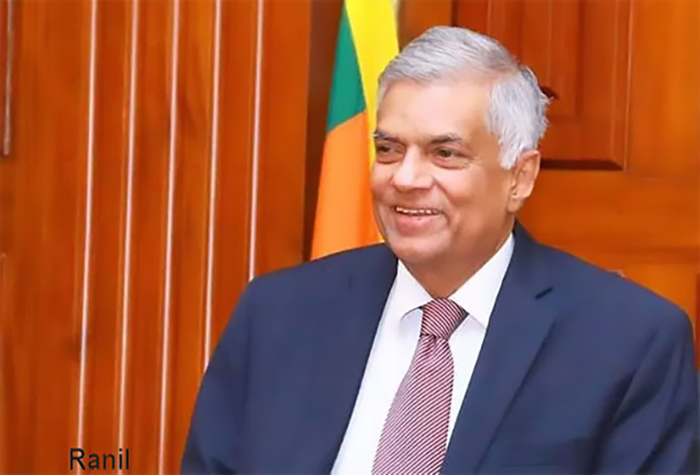
In the despicable absence of an urgent practical response on the part of the JVP-Anura Kumara Dissanayake-led NPP government to the devastating 28th March earthquake in Myanmar, ex-president Ranil Wickremesinghe has made a very timely and sensible proposal regarding how to assist our disaster stricken fellow humans in that country. ex-president Wickremesinghe! Thank you very much for saving, at least to some extent, Sri Lanka’s still unsullied reputation as a sovereign state populated by a most humane and hospitable people. You have again demonstrated your remarkable ability to emerge as an able state level troubleshooter at critical moments, this time though, just by being a mentor. It is a pity that you don’t think of adopting a more universally acceptable, less anglophile version of principled politics that will endear you to the general electorate and induce the true patriots of the country to elect you to the hot seat, where you will have the chance to show your true colours!
The ordinary people of Myanmar (formerly called Burma) are remarkably humble, polite and kind-hearted just like our fellow ordinary Sri Lankans. There’s a natural cultural affinity between us two peoples because we have been sharing the same Theravada Buddhist religious culture for many centuries, especially from the 4th century CE, when Buddhism started making gradual inroads into the Irrawaddy Valley through trade with India. Whereas Buddhism almost completely disappeared from India, it flourished in Sri Lanka and Burma. Nearly 88% of the 55 million present Myanmar population profess Buddhism, which compares to 72% of the 22 million population in Sri Lanka. Wickremesinghe has been mindful enough to take a glance at the historicity of close Myanmar-Sri Lanka relations. And he didn’t mince his words while giving some details.
At the beginning of his statement in this connection (which I listened to in a video today, April 1, 2025), Ranil Wickremesinghe said that our government has expressed its sorrow (but little else, as could be understood in the context). Countries near and far from Myanmar including even partly affected Thailand, and India, China, and distant Australia have already provided emergency assistance. Referring to the special connection we have with Myanmar as a fellow Theravada Buddhist country, he said that both the Amarapura and Ramanna nikayas brought the vital higher ordination ritual from there. We must help Myanmar especially because of this historic relationship.
When an earthquake struck Nepal, the birthplace of the Buddha, in 2015, we sent an army team to assist. On that occasion, Sri Lanka was the second country to provide relief, India being the first, with China becoming the third country to come to Nepal’s help. Today, India, Thailand, Malaysia, China and Australia have dispatched aid by now. Last year Sri Lanka gave 1 million US Dollars for Gazan refugees. We need to take a (meaningful) step now.
Wickremesinghe proposed that the army medical corps be sent to Myanmar immediately to set up a temporary hospital there. The necessary drugs and other materials may be collected from Buddhist and non-Buddhist donors in Colombo and other areas.
Emphasising the ancient friendly relationship between Sri Lanka and Myanmar, Wickremesinghe mentioned that King Alaung Sithu I (of the Pagan Dynasty, 1090-1167 CE) sent help to (Prince Keerthi who later became) King Vijayabahu the Great (1055-1110 CE) to defeat and drive away from the island the occupying Cholas after a 17 year long military campaign. The grateful Lankan monarch Vijayabahu, during his reign, offered the Thihoshin Pagoda (name meaning ‘Lord of Lanka’ pagoda, according to Wikipedia) and a golden Buddha image to the Myanmar king. (This pagoda is situated in Pakokku in the Magway region, which is one of the six regions affected by the recent earthquake. I am unable to say whether it remains undamaged. Though the monument was initiated during Vijayabahu’s lifetime, the construction was completed during the reign of King Alaung Sithu I {Wikipedia}).
Wickremesinghe, in his statement, added that it was after this that a strong connection between Sri Lanka and Myanmar started. In some Buddhist temples in Myanmar there are paintings by ancient Lankan painters, illustrating Jataka stories (Stories relating to different births of Buddha). Among these, Wickremesinghe mentioned, there is a painting depicting the duel between (the occupying Chola king of Anuradhapura) Elara and (his young native challenger from Ruhuna prince) Dutugemunu. (Although Wickremesinghe did not talk about it, a fact well known is that there is a copy of our Mahavamsa in Myanmar. In reporting the ex-president’s speech, I have added my own information and information from other sources. I have put this within parentheses)
Let’s hope President Anura Kumara Dissanayake is wise enough to derive some benefit from his predecessor’s mentoring in the name of our beloved Motherland.
Rohana R. Wasala
-

 Business2 days ago
Business2 days agoColombo Coffee wins coveted management awards
-

 Features3 days ago
Features3 days agoStarlink in the Global South
-

 Business4 days ago
Business4 days agoDaraz Sri Lanka ushers in the New Year with 4.4 Avurudu Wasi Pro Max – Sri Lanka’s biggest online Avurudu sale
-

 Business5 days ago
Business5 days agoStrengthening SDG integration into provincial planning and development process
-

 Business4 days ago
Business4 days agoNew SL Sovereign Bonds win foreign investor confidence
-

 Sports6 days ago
Sports6 days agoTo play or not to play is Richmond’s decision
-

 Features3 days ago
Features3 days agoModi’s Sri Lanka Sojourn
-

 Sports5 days ago
Sports5 days agoNew Zealand under 85kg rugby team set for historic tour of Sri Lanka


